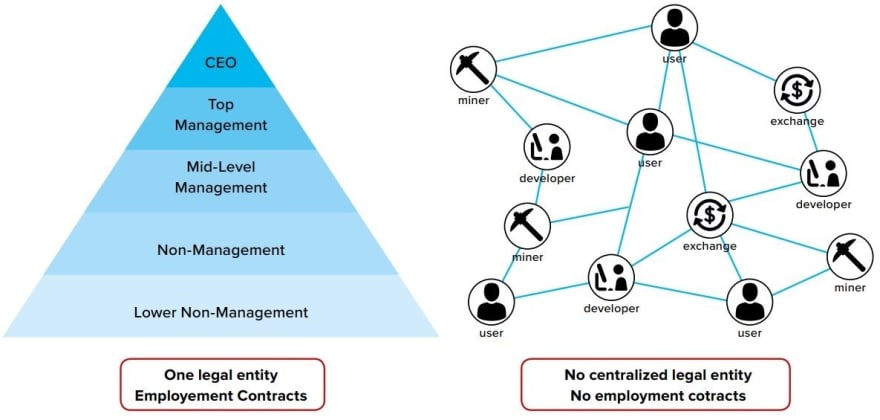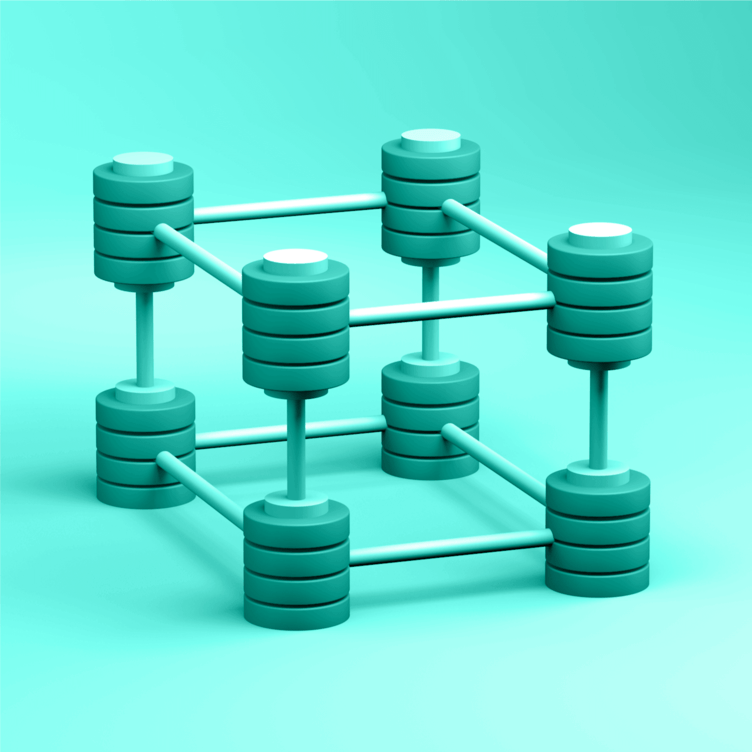Since the introduction of bitcoin and blockchain technology, the world has witnessed massive transformations in the way things are done. The adoption of blockchain technology into the digital world has further fostered the advancements and growth of the digital space to complete decentralization. Starting from the use of decentralized currencies like cryptocurrencies to the adoption of decentralized applications, to decentralized finance (Defi), and now decentralized autonomous organizations.

What is a Decentralized Autonomous Organization
A decentralized autonomous organization, also referred to as DAO, is an organization that runs based on code instead of having a centralized body overseeing activities in the DAO. The decentralized autonomous organization is a fancy term for a group of people who agree to abide by predetermined rules for a common purpose. These rules are recorded into the organization’s code via smart contracts—algorithms that execute when certain criteria are completed.
The DAO is designed such that decisions in the organization are taken by all the members of the organization, instead of a centralized head in charge. It completes the realization of the notion of giving power back to the people. It was designed for organizations such as NGOs that receive some form of funds to run the organization.
All decisions in the DAO are made collectively by every participant in the DAO. Generally speaking, community members create proposals about the future operations of the protocol and then come together to vote on each proposal. Proposals that achieve some predefined level of consensus are then accepted and enforced by the rules instantiated within the smart contract.
Brief history of Decentralized Autonomous Organization
Although most persons argue that bitcoin was essentially the first DAO created since it runs on community participation and consensus agreements from node operators who have never met each other before. However, The DAO was an organization designed to be automated and decentralized. It acted as a form of venture capital fund, based on open-source code and without a typical management structure or board of directors. To be fully decentralized, The DAO was unaffiliated with any particular nation-state, though it used the Ethereum network.
The DAO launched in April 2016 after a month-long period of crowdfunding and governance token sales. At the time, The DAO was recorded as the largest crowdfunding campaign launched as it raised over $150 million upon launching.
The developers of The DAO believed they could create an equally beneficial organization void of human error and mismanagement of the investor funds in the organization by placing decision-making power into the hands of an automated system and a crowdsourced process. The DAO is fueled by Ether and designed to allow investors to send money from anywhere in the world anonymously. The DAO would then provide those owners governance tokens, allowing voting rights on possible projects.
By May 2016, The DAO had accumulated a large percentage of all ether tokens issued up to that point (up to 14%, according to a report by The Economist).
However, The DAO had some loopholes and vulnerabilities. These vulnerabilities were eventually exploited by hackers in June 2016, leading to a loss of over 3.6 million ether (valuated at about $50million at that time). The DAO did not recover back from this setback as there were no precautionary rules set in the smart contract. However, since then there have been several attempts to create a successful DAO and so far there has been significant progress as the strength of any DAO lies in the strength of its smart contract.
How does a DAO work
Essentially, the decentralized autonomous organization works by smart contract codes launched. DAOs operate using smart contracts, which are essentially chunks of code that automatically execute whenever a set of criteria is met. Smart contracts are deployed on numerous blockchains nowadays, though Ethereum was the first to use them.
The rules that govern the DAO are written in the smart contract code and this is what governs the entire operations of the organization, only executable when these predetermined criteria are met.
To participate in the decision-making process of the DAO, users with governance tokens are automatically given voting rights in the decision-making process. The voting process is carried out electronically and each voter uses his governance tokens to cast votes participants are rewarded with more governance tokens after the voting process is concluded.
Steps in creating a DAO
Essentially there are 3 steps to creating a DAO
- Create the smart contract: the first step to creating a DAO is first creating the smart contract which would carry the code and rules for running the organization. This stage involves extensive testing of the code because it can only be changed through group voting once the DAO is launched.
- Funding: this stage is very essential as the DAO runs on the currency. Funds are raised from individual members and investors interested in the mission and vision of the DAO, agreeing to purchase a certain amount of tokens in exchange for a stake. Governance rules can also be established in this phase.
- Launching: The DAO’s code is deployed onto the blockchain after completion. Once it is launched, it can only be changed via collective voting by the stakeholders. The original developers no longer retain control of the project.
Benefits of DAO
- DAOs provide transparency as decisions are made by every participant of the organization. The concept of decentralization has fostered the idea of trust and, with DAOs, you don’t need to be worried about the people behind the organization and whether or not there’s an ulterior motive. The template everyone is judged by is the smart contract, and every transaction is immutably recorded on the blockchain
- There’s no central body in charge as decisions that run the organization is made by members of the organization.
Applications of DAO
So far DAOs are being used for many purposes such as
- Investment,
- Charity,
- Fundraising,
- Borrowing, or buying NFTs,
- Voting etc
And all without intermediaries. So you can have a better idea, for example, a DAO can accept donations from anyone around the world and the members can decide how to spend donations.
Examples of top DAO
There are over 100 DAOs in existence, however, some of the top decentralized autonomous organizations include
- MarkerDAO
- Faith tribe
- Paragon
- Gains Associates
- Tangible
- Gaming and DAOs
Conclusion
Just as NFT is the futuristic or digitized version of owning property rights, Metaverse is a digitized world similarly DAOs are the blockchain and digitized version of organizations. Over time, decentralized autonomous organizations have become a clear concept that has been gaining traction. Some projects are still looking to achieve complete decentralization through the DAO model, but it is worth pointing out they are only a few years old and have yet to achieve their final goals and objectives.
As internet-native organizations, DAOs have the potential to change the way corporate governance works completely. While the concept matures and the legal gray area they operate in is cleared, more and more organizations may adopt a DAO model to help govern some of their activities.

